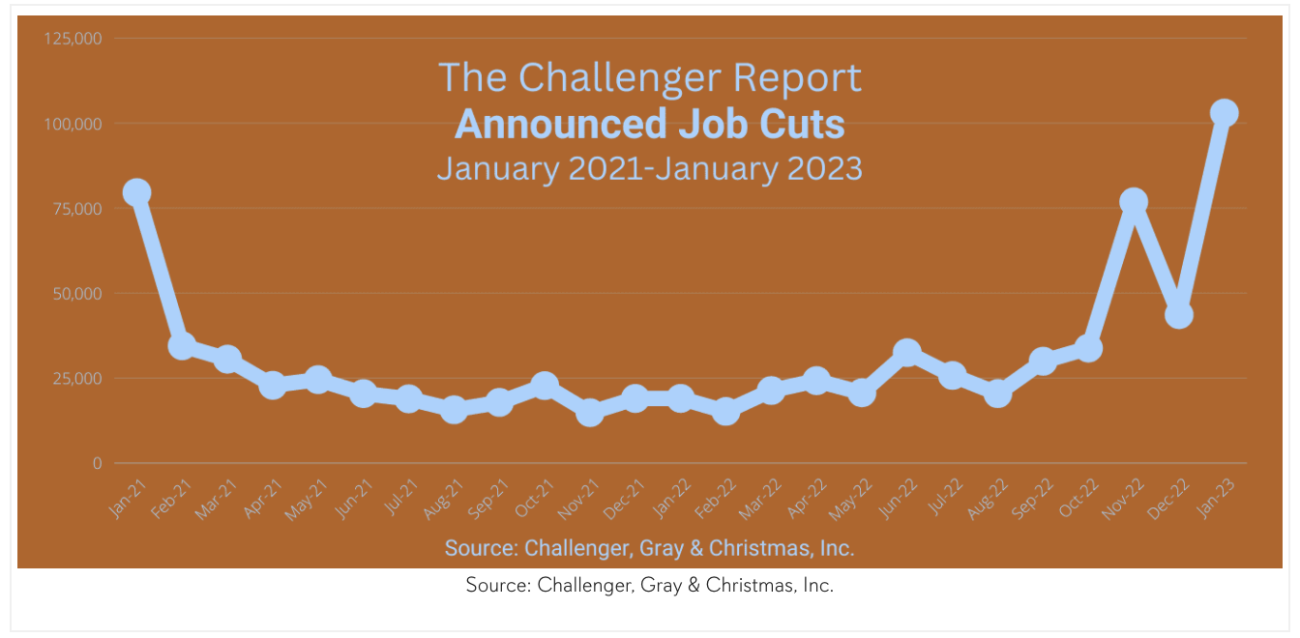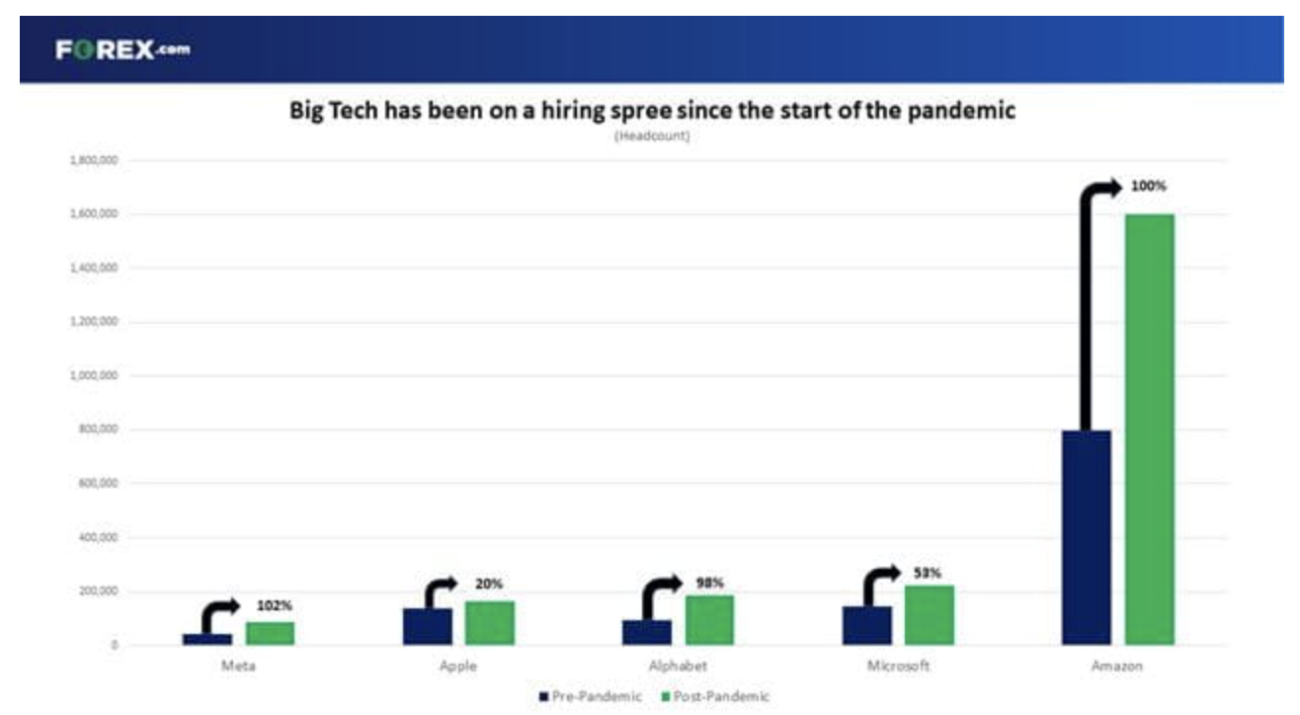|
Listen to this story
|
As the tech-induced recession plods on, layoffs continue to drain from Big Tech companies. According to employment firm Challenger, Gray & Christmas Inc, the layoffs in January have impacted 102,943 workers, a more than two-fold increase since December and a jump by more than five times from the past year. For all intents and purposes, most of these companies have blamed the layoffs on a single offender – overhiring.

Do We Really Need Fewer Workers?
It is interesting to see the extent to which companies have bloated up. A recent report published by the Bank of America Research stated that while the numbers had grown exponentially, companies did not need as many workers. In fact the productivity of workers had dropped across years – the number of workers per USD 1 million in revenue had fallen from eight in 1985 to just two in 2023.
To most, this may not seem like a fair comparison simply because of inflation – a million dollars in 1985 is not the same as today.
Do Big Techs Overhire?
For anyone following economic downturns, the bursting of the tech bubble could have been spotted from a mile afar. As the pandemic lockdown persisted and industries like manufacturing suffered setbacks, tech soared unreasonably high. Tech companies grew richer as did their bosses and the techies themselves. It was all good until it wasn’t.
On November 19, 2021, Nasdaq started plummeting after touching an all-time high signalling that a market correction was on the way for tech.

But while the layoffs have done considerable damage, in comparison to the hirings completed during the pandemic, the numbers can seem measly. According to a report published by Daniel Howley from Yahoo Finance, Google had laid off 12,000 but had hired 67,880 jobs during the pandemic. Microsoft has so far announced 10,000 layoffs as compared to 77,000 they had added before and Amazon has laid off 18,000 layoffs against the job growth of 746,000 in the pandemic.
Tech workers, also as a rule, have an upper hand in the labour market. They are most likely to find new jobs quickly because they have more degrees than the average worker and their skills are still in demand. A survey done by ZipRecruiter finds that “among people who were recently laid off and worked in tech previously, 37% found a new job within one month, and 79% found a new job within three months”.
Will the Pattern Continue?
It was pretty simple – when times were good, companies became too optimistic and went overboard with hiring. The ballooning demand for tech employees had pushed companies like Google and Meta to fight a talent war they weren’t prepared for.
Vikas Kakkar, founder of HRTech firm Amara.ai said, “Because of the pandemic, many things have changed in the past three years.”

“Many companies have moved their digital transformation plans from 2025 to 2020-21. Everyone wanted to switch to the hi-tech working style. The market’s demand in general increased, pushing tech companies to increase production to meet these demands. Many tech companies accelerated hiring to meet the demand because they thought the boom would continue even after the pandemic,” he continued.
“However, as restrictions were lifted and people began to leave their homes and started going to office, demand fell, resulting in significant losses for these large technology firms. Some of these resources had been hired at a higher cost due to the sudden increase in demand,” he noted.
And now that the market demand is returning to pre-covid levels, these tech companies are playing it safe by laying off excess and high-cost resources hired during covid, Kakkar explained.
“A lot of the responsibility can also be placed upon investors,” Nehal Gupta, the director of AMU Leasing Pvt. Ltd., a tech NBFC said. “Most tech companies are investor funded and require a structured organisational hierarchy and large teams in the early stages of business. The focus is on scalability and growth vs achieving positive unit economics which leads to overhiring and later to massive layoffs when times are unprecedented,” she stated.
There is some truth to this. Christopher Hohn, the billionaire-investor who holds a 6% stake in Alphabet, had reportedly written to Sundar Pichai raising alarms over the ‘excessive headcount’ of Google. Hohn was also concerned that Google employees were getting paid far above the market average and while the costs weren’t a problem until 2020, they were an issue now.
“When things are looking up, hiring is a natural response but fitting in your budgeting needs is the way to go. And being a loyal employer comes with a cost but pays a better price in the long run in terms of employee turnover and productivity. Being loyal as an employer should be an integral functioning mechanism,” Gupta reasoned.
But then can overhiring simply be treated as a cyclical issue? Gupta says this callousness will hurt companies in the long-term. “It is here to stay if companies don’t realise the hiring and turnover expenses. Offering relieving benefits comes at an expense which in the long run hurts the productivity and reputation of the company.”



















































































